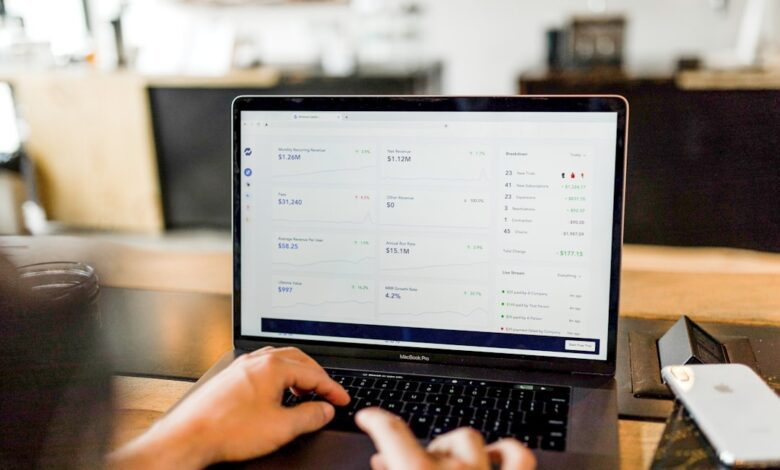Metals in Motion: Navigating Industrial Demand, Investment Strategies, and Economic Trends

In an increasingly interconnected global economy, the dynamics of metal markets reflect not only industrial needs but also investment opportunities. This article delves into the multifaceted role of various metals, beginning with silver, whose significance spans both industrial applications and investment allure. We will explore how copper prices serve as a vital indicator of economic health, while the burgeoning green energy sector reshapes demand for rare earth metals. Additionally, we will compare platinum and palladium as investment options, assess how metals contribute to portfolio diversification, and examine the effects of inflation on the pricing of precious and industrial metals. Finally, we will consider the future of aluminum within a sustainable economy and the implications of mining regulations on metal prices. Through this exploration, we aim to provide a comprehensive understanding of how these metals are interwoven with both economic trends and investment strategies.
- 1. "Silver's Dual Role: Bridging Industrial Demand and Investment Appeal"
- 2. "Copper Prices: A Barometer for Global Economic Trends"
- 3. "Green Energy Revolution: Shaping the Future Demand for Rare Earth Metals"
1. "Silver's Dual Role: Bridging Industrial Demand and Investment Appeal"
Silver occupies a unique position in the market, functioning simultaneously as an essential industrial metal and a sought-after investment asset. This dual role has significant implications for its price dynamics and overall demand.
On the industrial side, silver is renowned for its exceptional conductivity and reflectivity, making it a critical component in various applications, including electronics, solar panels, and medical instruments. As industries increasingly pivot towards advanced technologies and renewable energy solutions, the demand for silver is expected to rise. For instance, the growth of solar energy has been a notable driver, as silver is used in photovoltaic cells to enhance efficiency. Additionally, silver's antimicrobial properties make it valuable in healthcare, further solidifying its industrial importance.
Conversely, silver's status as a precious metal attracts investors seeking a safe haven during economic uncertainty. Often referred to as a "poor man's gold," silver tends to be more accessible due to its lower price point compared to gold, making it an attractive option for both individual and institutional investors. In times of inflation or geopolitical tension, silver often serves as a hedge against currency fluctuations, leading to increased investment demand.
The interplay between industrial and investment demand creates a complex pricing environment for silver. Market fluctuations in either sector can significantly impact prices. For example, a surge in industrial demand might drive prices up, attracting speculative investment, while a downturn in industrial use can lead to oversupply and decreased investor interest.
In summary, silver's dual role as both an industrial commodity and an investment asset not only enhances its appeal but also adds layers of complexity to its market behavior. As global economies transition towards more sustainable practices and technological advancements, silver is likely to remain a key player in both realms, influencing its demand and pricing in the years to come.
2. "Copper Prices: A Barometer for Global Economic Trends"
Copper prices have long been regarded as a reliable indicator of global economic health, often referred to as "Dr. Copper" due to its widespread use in various industries. As a key component in electrical wiring, plumbing, and construction, copper demand is closely tied to economic activity and infrastructure development. When economies are thriving, the demand for copper typically rises, leading to higher prices. Conversely, during economic downturns, copper consumption often declines, resulting in falling prices.
The correlation between copper prices and global economic trends can be attributed to several factors. For instance, significant infrastructure projects—such as those seen in emerging markets—drive substantial demand for copper. Additionally, manufacturing and construction sectors are heavily reliant on copper, meaning any fluctuations in these industries can have a direct impact on copper pricing.
Moreover, copper prices are sensitive to geopolitical developments and trade policies. Tariffs, trade agreements, and political instability can affect supply chains, thereby influencing market prices. The recent global shift toward green energy technologies, particularly electric vehicles and renewable energy systems, has further tightened copper supply, as these sectors require substantial amounts of the metal.
Interestingly, analysts and investors closely monitor copper price movements for insights into future economic conditions. A rising copper price often signals anticipated growth, while declining prices may suggest economic contraction. Therefore, tracking copper prices not only provides insights into the metal's demand dynamics but also serves as a barometer for broader economic trends, making it an essential tool for investors and policymakers alike.
3. "Green Energy Revolution: Shaping the Future Demand for Rare Earth Metals"
The transition to green energy is significantly reshaping the demand landscape for rare earth metals, which are essential for various renewable energy technologies and electronic applications. As the world increasingly prioritizes sustainability and the reduction of carbon emissions, the reliance on these metals has intensified. Rare earth elements (REEs) such as neodymium and dysprosium are critical for the production of high-performance magnets used in wind turbines and electric vehicle (EV) motors. The surge in EV production, driven by both consumer demand and regulatory incentives, is expected to further increase the need for these metals.
Moreover, the shift towards solar power generation also relies heavily on rare earth metals. For instance, certain photovoltaic technologies utilize indium and tellurium, which are categorized as rare metals. As countries invest heavily in solar infrastructure, the demand for these materials is projected to rise.
Additionally, the broader push for energy-efficient technologies—such as energy storage solutions and advanced batteries—also hinges on rare earth metals. These applications are crucial for enhancing the efficiency and longevity of batteries, thereby supporting the viability of renewable energy systems. The growing focus on electric storage systems to manage intermittent renewable supply further amplifies the need for these materials.
However, the supply chain for rare earth metals poses challenges. A significant portion of the world’s production is concentrated in a few countries, particularly China, which can create vulnerabilities in availability and pricing. As a result, efforts to develop alternative sources and recycling methods are gaining traction, aiming to ensure a stable supply while minimizing the environmental impact of mining.
In summary, the green energy revolution is poised to increase the demand for rare earth metals significantly, driven by their critical role in renewable technologies and energy efficiency. This shift not only highlights the importance of these materials in achieving global sustainability goals but also underscores the need for strategic supply chain management to support the burgeoning green economy.
In conclusion, the intricate dynamics of metals in both industrial and investment markets reveal their critical role in shaping economic landscapes and investment strategies. Silver stands out for its unique duality, serving as both a vital industrial component and a sought-after investment asset. Meanwhile, copper prices offer a pulse on global economic health, reflecting the interconnectedness of markets. The burgeoning green energy sector is set to significantly elevate the demand for rare earth metals, underscoring the importance of these materials in the transition to sustainable energy solutions.
As we compare platinum and palladium, investors must weigh the unique attributes of each metal, considering factors such as market volatility and future applications. Furthermore, metals play a pivotal role in diversifying investment portfolios, providing a hedge against inflation, which continues to exert pressure on both precious and industrial metal prices. Looking ahead, aluminum's potential in a sustainable economy illustrates the necessity for innovative applications while responding to environmental concerns.
Lastly, the impact of mining regulations cannot be overlooked, as they significantly influence metal prices and availability in the market. As we navigate these complex interrelationships, understanding the multifaceted roles of metals will be essential for both investors and industries alike, ensuring informed decisions in an ever-evolving economic landscape.





